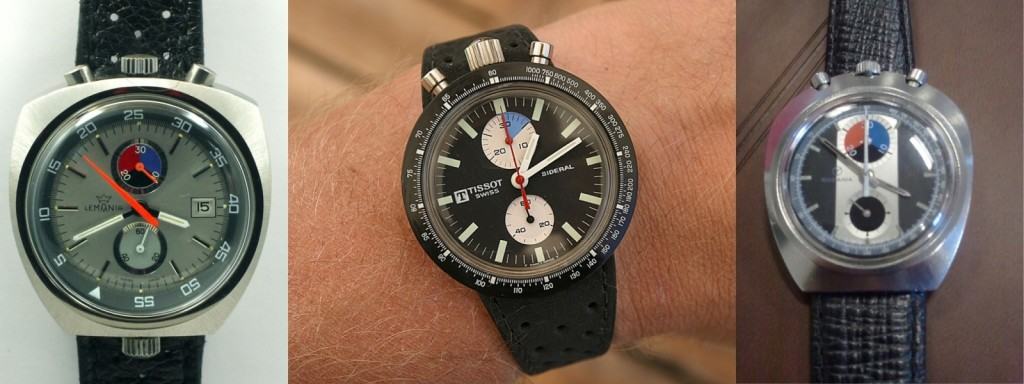Taking The Bull By The Horns – Quick Guide on Vintage Bullhead Chronographs
Since the late 1990s producing large watches became a trend that I think Panerai started. Obviously there were larger watches before but the Florentine brand was the first to gain huge worldwide success with their over sized timepieces – even if the design was not new but a re-modeling of their early divers from the 1940s. After that things got out of hand quickly and for some reason watch manufacturers thought the only way to go is bigger and bigger. Panerai was the barrier breaker, or were they not?
When we think about the 1950s and early 1960s we picture the watches of our father, grandfather or uncle. Really nice, round, classic shapes, Omega Seamasters, Rolex Datejusts, Longines, Doxas etc. These are nowadays categorized by the WIS-community (*Watch Idiot Savant) as ‘dress watches’. Then around the late 1960s and early 1970s watch companies started to look for something else. Started to become braver regarding the shapes and sizes of their products. Among the best examples are the bullhead watches.

Kevin’s Sicura bullhead from his site, SomeTimeAgo
When you Google ‘bullhead watch’ the first few results will lead you to Omega. No doubt one of the best known bullhead watch ever produced was the reference ST.146.0011 which was part of the Seamaster Chronostop collection. A model Omega decided to resurrect in 2013 as part of their line of reissued watches that has been going on ever since. Omega however was not the only company to come out with something like that during the time. Many Swiss brands had similar models like Breitling, Sicura and Tissot not to mention those brands that disappeared in the last 50 years. Not only Swiss but Japanese companies like Citizen and Seiko had bullheads among their line of watches of the time.
But what is a bullhead exactly and why is it so special? The word bullhead is an umbrella term used for chronograph watches that have their crown and chronograph pushers on top of the case (in some cases the crown is at the bottom of the case) rather than on the side hence resembling the look of the head of a bull with its horns. These cases are usually larger and thicker than the average chronographs. Most of the time their cases are not even-shaped, meaning that the top of it where the pushers and the crown is located is wider and thicker and the bottom of the case is thinner. This way the dial is tilted towards 6 o’clock. This allows the wearer to check the time on the watch much more easily hence the oddity of the case. They are particularly special for no reason other than in most cases they were produced in relatively small numbers so they are desired among watch collectors. Of course as said it before the size of the case also plays a key part in being sought-after.

From left to right: The Watch Shop Los Angeles’ photo of their Lemania bullhead, DaveS’ Tissot Sideral and Rodania bullhead owned by asdf1230 on WacthUSeek

Drewdoog’s great Seiko from WatchUSeek
Regarding the movements we can find in bullheads there are 3 main groups; you have pieces with so-called in-house movements. Watch manufacturers like Heuer or Omega used their own – or heavily modified out-sourced – movements in these examples. Then you have the mass produced chronograph movements like the Valjoux 7733 or 7734 (the latter has a date feature hence the change in the last digit) and last but not least you have the 3rd group. These are very cheap, lower quality pin lever calibers. In these last cases the only interesting thing about the watch is its appearance. Bullheads are very funky looking watches in general. Loads of colors, shapes and forms can be found on the dial, cases are mostly steel – or rhodium plated in the cheaper versions. Few models have gold plated cases with only a thin layer of gold that gets worn pretty easily.
Did you know? You can categorize the movements watch companies use in their watches by many groups. One of the categories is the origin of the movements. Regarding this there are 2 types of movements: out-sourced (or 3rd party) and in-house movements. Out-sourced movements are produced by another company and then bought by the brand. They either use it as-is or have them modified according to their own specifications for use in their watches. In-house movements are designed, developed and produced by the brand, hence the name.
They might not look good on everyone’s wrist. You need to have a certain wrist size to pull a bullhead off that’s for sure. But for the ones who look for something out of the ordinary a true 70’s bullhead is just the perfect match. Not to mention that you can pick a decent example up under $1000.
